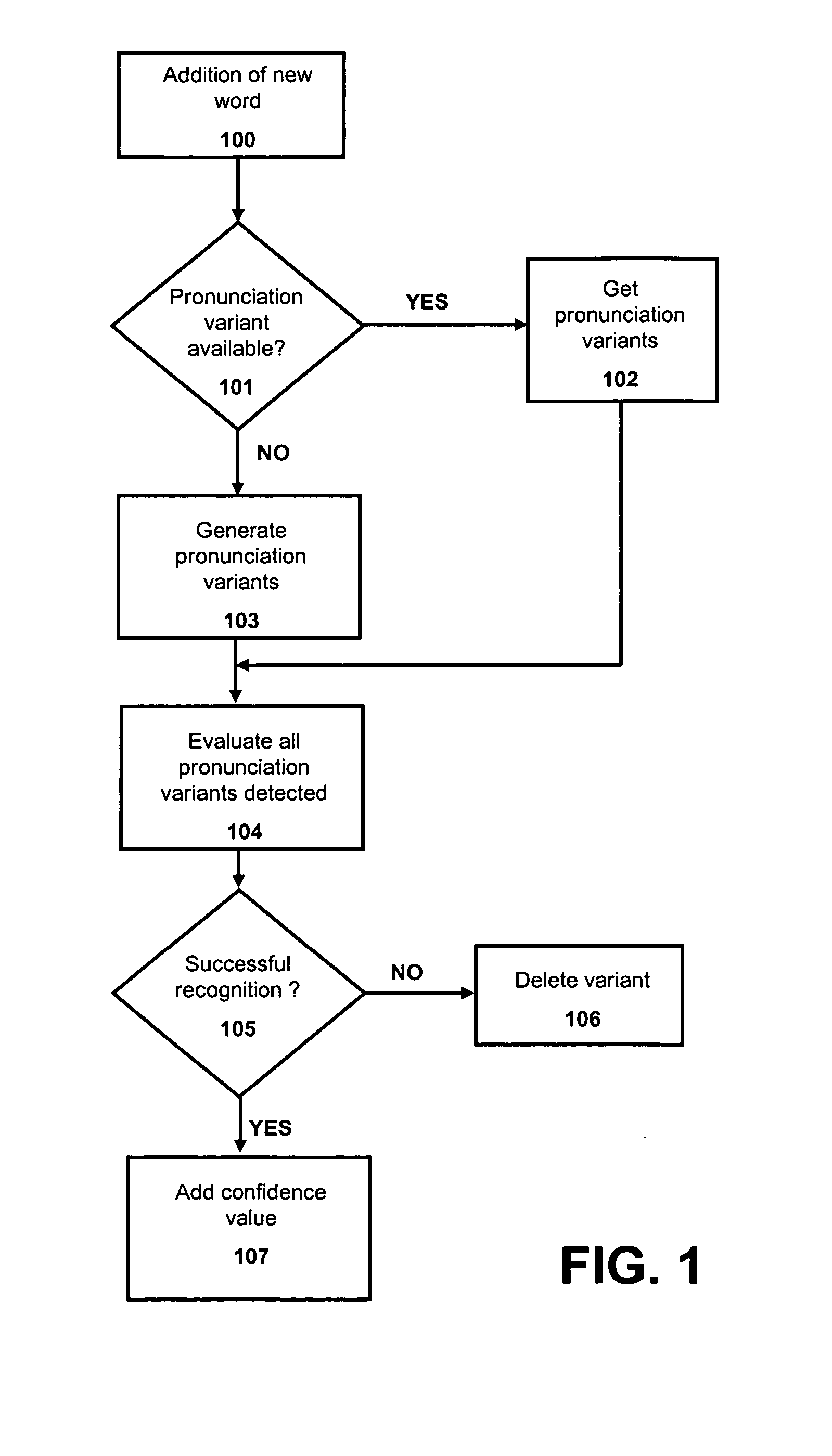Generation and deletion of pronunciation variations in order to reduce the word error rate in speech recognition
a technology of pronunciation variation and word error rate, applied in the field of phonemebased speech recognition, can solve the problems of limited amount of memory available, increased memory space usage, and increased number, and achieve the effect of reducing the number of stored pronunciation variants and enabling memory space to be saved
- Summary
- Abstract
- Description
- Claims
- Application Information
AI Technical Summary
Benefits of technology
Problems solved by technology
Method used
Image
Examples
example 1
[0045]“Herr Meier” is accepted as a new German entry into the vocabulary.
[0046] Using Typeln the following (German) canonic phoneme sequences are determined:
[0047] Original 1: / h E r m aI 6 /
[0048] The variants can appear as follows. It is assumed that overall five vocabulary entries correspond to the maximum permissible memory requirement:
[0049] variant 1.1: / h E r m aI 6 /
[0050] variant 1.2: / h E r m aI er /
[0051] Variant 1.3: / h 6 m aI 6 /
[0052] Variant 1.4: / h e r m aI e 6 /
[0053] Selection or determination of the confidences of the variants
[0054] Herr Meier has been called 10 times by voice command. The five variants are referenced as follows, which corresponds to the boolean confidence already mentioned:
Pronunciation variants#ReferencingsΣConfidenceOriginal 1:44Variant 1.1:00Variant 1.2:66Variant 1.3:00Variant 1.4:,00
[0055] In the adaptations step which now follows all variants with the confidence 0 are deleted. The vocabulary thus only still contains the variants “O...
example 2
[0060] The name “Frau Martin” is now added to the vocabulary in example 1 by means of the phoneme-based Sayln system. The phoneme sequences determined are as follows:
[0061] Original 2: / f r aU m a r t e-. /
[0062] The variants for “Frau Martin” appear as follows:
[0063]
[0064] Variant 2.1: / f r aU m A r t In /
[0065] Variant 2.2: / f r aU m A t n /
[0066] The vocabulary now contains the following entries:
[0067]
[0068] Original 1: / h E r m aI 6 /
[0069] Variant 1.2: / h E r m aI er /
[0070] Original 2: / f r aU m a r t e- /
[0071] Variant 2.1: / f r aU m A r t I n /
[0072] Variant 2.2: / f r aU m A t n /
[0073] Selection or determination of the confidences of the variants
[0074] Herr Meier is called three times, Frau Martin five times by voice command. The five variants are evaluated with confidences as follows. In this case a criterion is now used, that is a degree of confidence which for each variant allows information about the reliability of the spoken expression:
Pronunciation varia...
PUM
 Login to View More
Login to View More Abstract
Description
Claims
Application Information
 Login to View More
Login to View More - R&D
- Intellectual Property
- Life Sciences
- Materials
- Tech Scout
- Unparalleled Data Quality
- Higher Quality Content
- 60% Fewer Hallucinations
Browse by: Latest US Patents, China's latest patents, Technical Efficacy Thesaurus, Application Domain, Technology Topic, Popular Technical Reports.
© 2025 PatSnap. All rights reserved.Legal|Privacy policy|Modern Slavery Act Transparency Statement|Sitemap|About US| Contact US: help@patsnap.com


